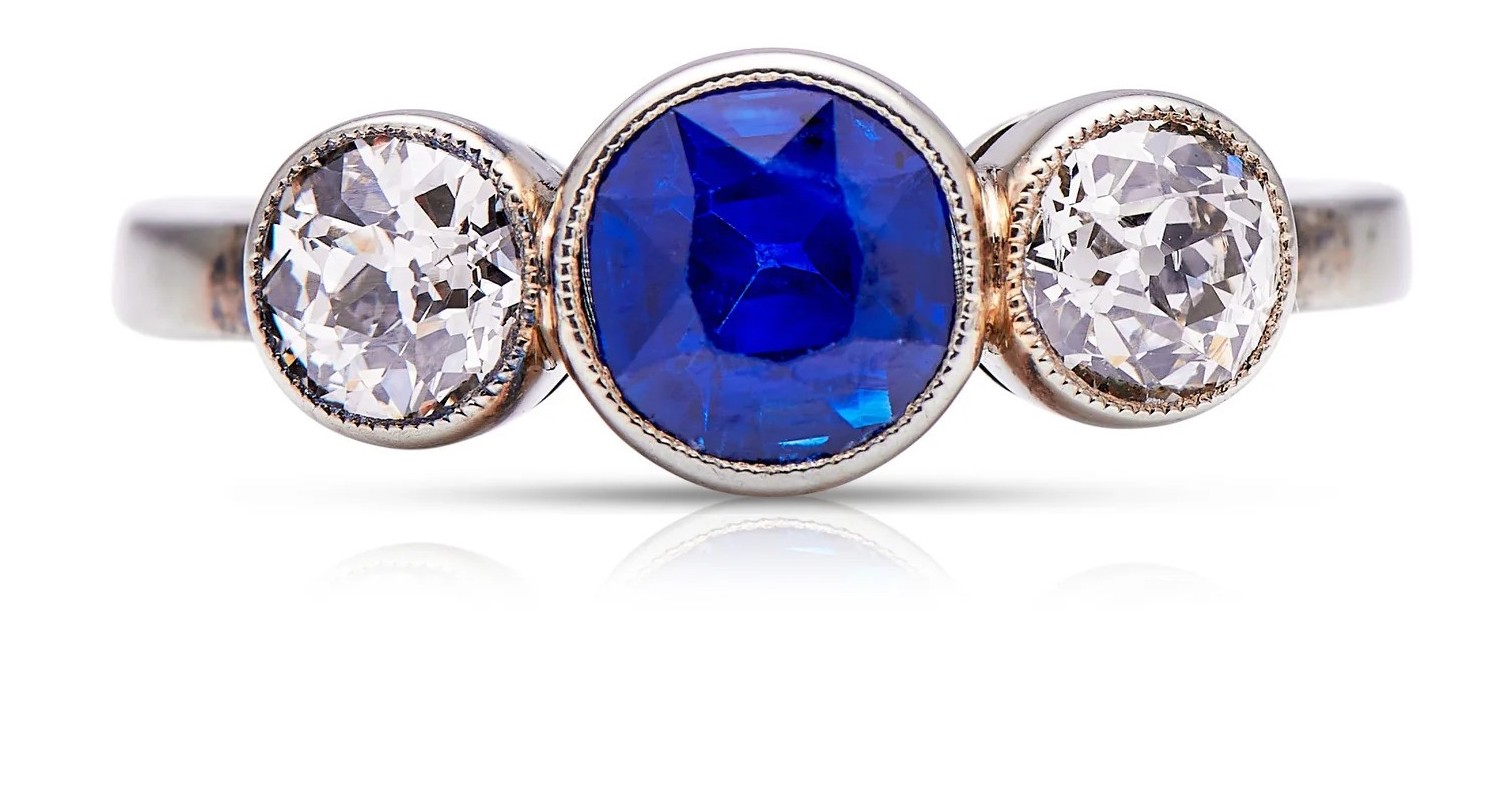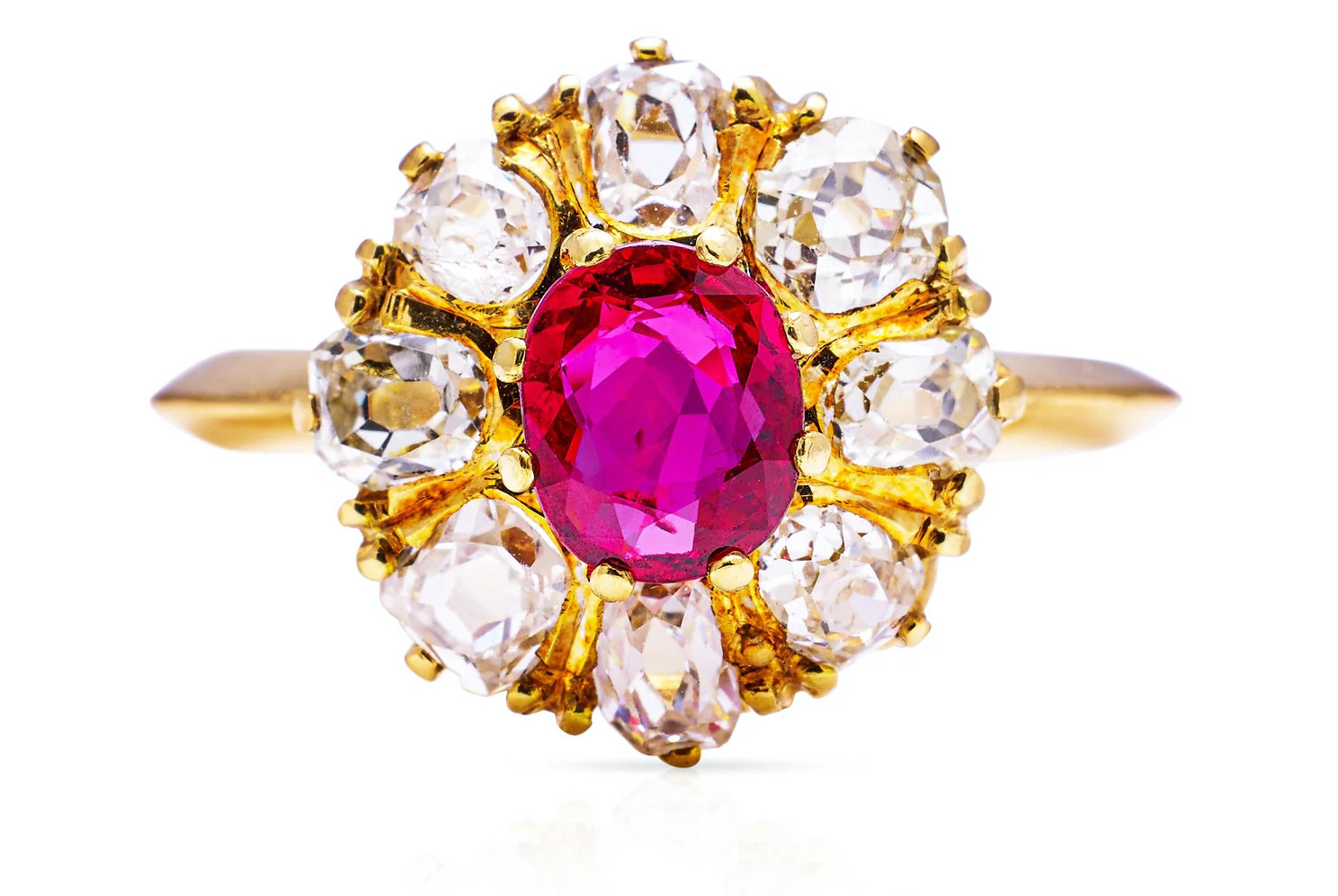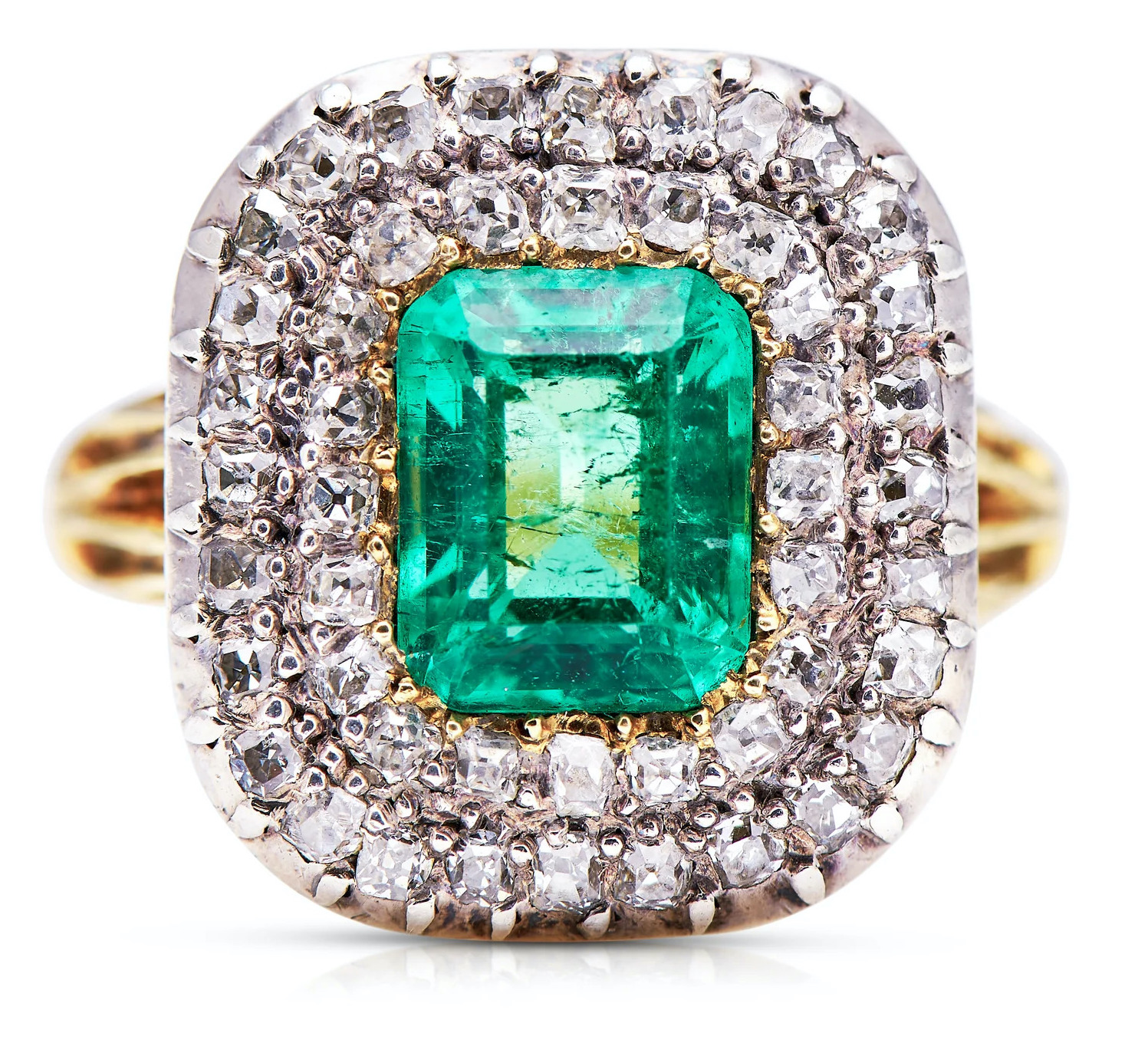Antiques Trade Talks – The Antique Ring Boutique
 The Antique Ring Boutique was founded my Sam Mee when he was 23 years old. With a background in fine art, Sam became entranced by the world of jewellery after working in Liberty London and the roots of his newfound passion led him to launch the business in 2019, when he was welcomed as the youngest member of Lapada. The business has since sold over 1,000 of rings, many online and also via viewings in Knightsbridge – where he’s about to move into new premises. The boutique’s speciality is engagement rings, but they have a large collection of everyday and cocktail antique rings as well.
The Antique Ring Boutique was founded my Sam Mee when he was 23 years old. With a background in fine art, Sam became entranced by the world of jewellery after working in Liberty London and the roots of his newfound passion led him to launch the business in 2019, when he was welcomed as the youngest member of Lapada. The business has since sold over 1,000 of rings, many online and also via viewings in Knightsbridge – where he’s about to move into new premises. The boutique’s speciality is engagement rings, but they have a large collection of everyday and cocktail antique rings as well.What is the unique appeal of antiques?
There’s a big surge in interest in antique engagement rings. Younger people are fed up seeing the same old design on their friends’ ring fingers – they don’t want a me-too modern solitaire diamond. They want something more unique with a personality that matches their own – something with a history. The other appeal is sustainability, again something that attracts a younger audience. They are more conscious of their impact on the world and understand the environmental damage of modern techniques for mining metals and gems.

Which are the ones to watch/future sellers?
Everyone is drawn to Art Deco, but most of the time they leave with Victorian or Edwardian. It’s partly that rings from those era can be more practical and wearable. Also people initially feel more confident about Art Deco – but when I show rings from other eras, and they can handle them and try them on, they are often captivated.
I don’t stock them, but second hand and antique wedding bands have been coming up in conversation lately – so this is a trend worth keeping an eye on.
Of course, the march of time is making new antiques all the time. Much of Art Deco is technically vintage (as it’s under 100 years old) but year by year transitions to full antique status. And rings from the first half of the 1970s now qualify as vintage as it’s more than 50 years ago.

What antiques do you have at home/collect and why?
I have a good collection of 18th-century mirrors and paintings. It’s the proportions and subject matters that really appeal – they are usually whimsical and over the top, if that doesn’t sound too pretentious. I also like well-known 19th-century makers.
How is the industry changing and are you optimistic for its future?
There is a surge in demand for fine antiques and I do worry about the supply – but as a dealer friend says, there are always nice things out there. People’s tastes change as well – there is interest in rings from the 70s now it counts as vintage, and in just six years the 80s will begin to count as vintage. I started to sell ’60s and ’70s rings because I noticed the rise in interest.

Is new technology good for the trade and buyers/collectors?
Yes. Customers can buy from abroad, they can browse before I see them to create a shortlist, they can contact me easily – and I pride myself on answering quickly. Visual platforms like TikTok and Instagram are other things we’re exploring – a great way to meet a different type of audience.
Tell us some trade secrets?
The only secret I really have is that I go with my gut. To be honest, I see the same dealers in a lot of places so it’s hard to have secrets. The only real secret is experience – start out handling as much as you can (carefully!) before you commit money. It’s a tactile business. You really need to learn the feel of what you’re selling. The papers often carry stories of people finding rings worth thousands for sale for a few pounds in charity stocks so that’s my other secret – always be on the lookout.

What antiques/artworks would you buy if money were no object?
Textiles – rare Islamic textiles including 18th-century and 17th-century Persian carpets. If it’s not jewellery, I often find myself spending all my money with a dealer called Adam Calvert Bentley.
You’re down to your last 50 quid – what antiques/art would you buy?
I’d buy something exceptional but damaged. I’d rather have the best of something authentic and rare, even if damaged or smaller, rather than something of mediocre quality and perfect… I’d want just a fragment of a William De Morgan tile.

Where are your favourite antique hunting destinations and why?
I go to fairs in America, Paris and Italy and sometimes the UK. I don’t really go to estate sales as there are too many other people – I like to buy with a sense of calmness and time to think. America is amazing – I’ve never seen so much jewellery as when I walk in to American fairs. It’s slightly overwhelming.
What are some of the biggest mistakes that buyers make – what questions should they ask?

The number one mistake is everyday wearability. This is about both the design – how prominent the ring is but also the hardness of the stone. People don’t always understand how to look after gemstones. I always inform customers of the pros and cons but some people ignore the advice – and other jewellers aren’t so open about the practicalities of wearing antiques. Emeralds are a good example. They are quite brittle and people don’t know this.
Any styling advice for using antique jewellery?
Don’t be too precious and don’t over think. There are no rules – you can combine them well with modern pieces – they can take the edge off more serious or bling contemporary pieces.

What do you consider the high point of your career in antiques?
It sounds trite, but the real highlight is meeting customers, getting to know their back stories, and matching them to a ring – and with engaged couple buying together, there’s a real buzz when I spot them catching each other’s eye and holding that gaze. That ring is the one. There’s also the back stories of the pieces that I sell. At the moment I’m selling a lot of antique engagement rings.

What advice would you give to people new to antiques who want to learn more?
Sit in auctions but don’t buy. Handle the objects, make notes on the catalogue, observe others. Then start guessing what the pieces will go for – and keep doing this until you start to guess right about what goes for more than their estimates.


